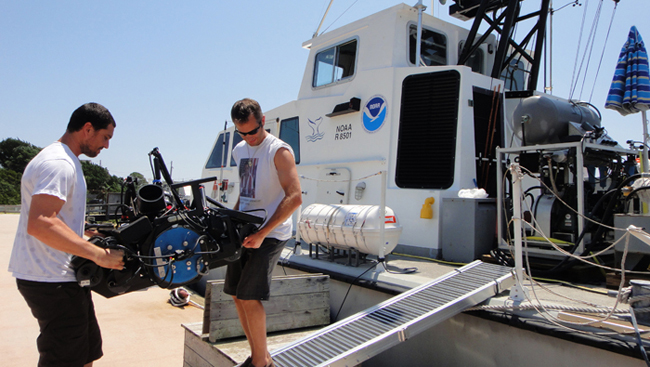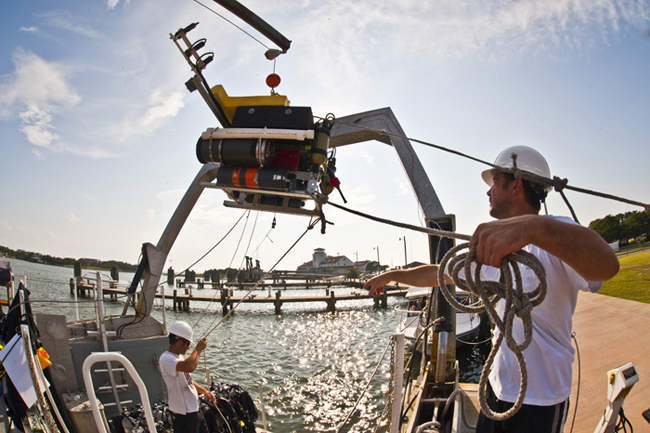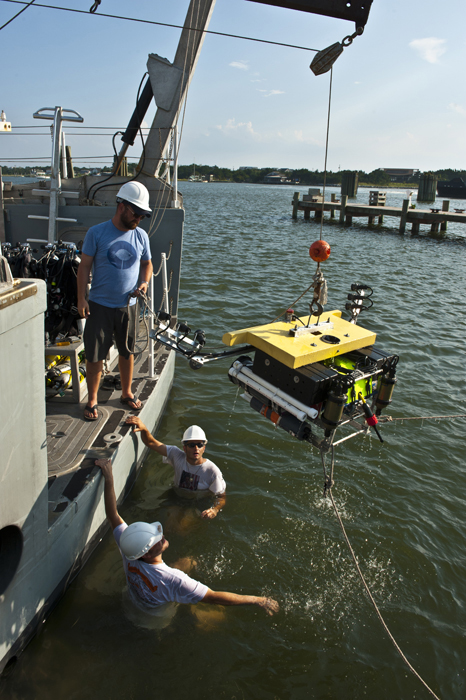
Divers Exploring WWII 'Graveyard of the Atlantic'

The seas off the North Carolina coast are known to be filled with World War II shipwrecks. But this battleground hasn't been thoroughly studied — until now.
These waters are known as the Graveyard of the Atlantic and Torpedo Junction. Here, dozens of ships — mostly merchant vessels — were sunk by German U-boats.
The remains of those ships, along with several U-boats, rest on the Atlantic Ocean seafloor. The National Oceanic and Atmospheric Administration (NOAA) estimates that from January to August 1942, more than 50 vessels were lost to the U-boat assault.

"They sank ships at will," said study team member Eva Kovacs of the Woods Hole Oceanographic Institution (WHOI) in Massachusetts. Kovacs is part of a 10-day mission to provide NOAA with the first 3-D optical survey of the undersea wrecks off the North Carolina coast.
"We hope to get a full 3-D picture of several sites so that NOAA can go back and assess the wrecks' condition and the impact of the ships on the marine environment," Kovacs said. "We're breaking new ground."

The Battle of the Atlantic mission is the first study of a maritime battleground off the coast of North Carolina, according to NOAA officials.
The mission, currently in progress aboard the NOAA vessel SRVx, employs a remotely operated vehicle (ROV) outfitted with several underwater 3-D and high-definition camera systems developed by the mission scientists. The team expects to survey wrecks as deep as 600 feet (183 meters).
Sign up for the Live Science daily newsletter now
Get the world’s most fascinating discoveries delivered straight to your inbox.
WHOI hopes to provide dramatic still and video images, which will be the detailed data needed to fashion the large, two- and three-dimensional mosaic maps of the shipwreck sites. The maps will help the researchers monitor changes in the vessels over the years.
The dive team will be on the lookout for one of the last of the known German U-boats, which has yet to be found.
On the other side of the United States, a separate research mission recently finished exploring World War II shipwrecks of the coast of Hawaii.










